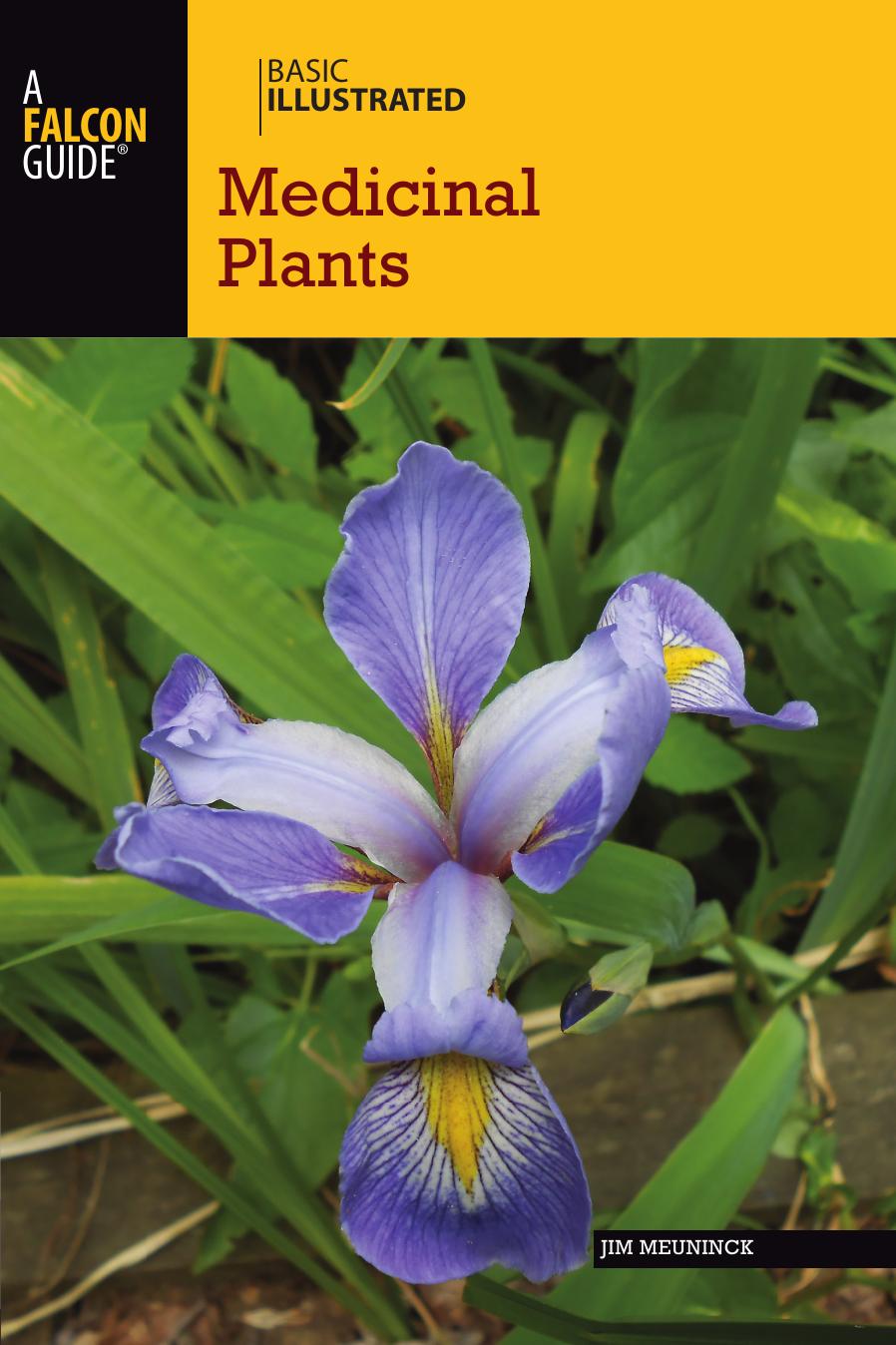Basic Illustrated Medicinal Plants by Jim Meuninck

Author:Jim Meuninck
Language: eng
Format: epub, pdf
ISBN: 9781493016891
Publisher: Falcon Guides
JEWELWEED, SPOTTED TOUCH-ME-NOTS
Basalminaceae (Impatiens capensis Meerb.)
Identification: Fleshy annual that grows in dense colonies. Plant can reach 7’ in height. Stems are simple, light green, almost translucent, with swollen nodes. Leaves are deep green, thin and ovate, with 5–14 teeth. Flowers are 1⁄2”–3⁄4” in length; orange yellow with reddish-brown spots; spur shaped, irregular, with the spur curving back, lying parallel to the sac. Fruit is oblong capsule that bursts open when ripe and disperses seeds.
Habitat: Widespread east of the Rockies; incidental in the West. Found in lowlands, wetlands, fens, along edges of lakes, streams, and bogs.
Food: Eat the small flowers of summer in salads and stir-fries. The young shoots of spring form a ground cover in wet lowlands and along streams, wetlands, and lakes. Pick the shoots and add them to your mushroom soup and egg dishes, or stir-fry or sauté them with spring vegetables.
Traditional uses: As a traditional treatment for poison ivy, crush and rub the aerial parts of jewelweed over the inflamed area—the plant juices immediately reduce itching as well as inflammation. Native Americans used jewelweed for treating dyspepsia, measles, and hives. The Creek used an infusion of smashed spicebush berries and jewelweed as a bath for congestive heart failure. The crushed flowers placed over bruises, cuts, and burns.
Modern uses: The whole herb is infused as an appetite stimulant and diuretic. Naturopaths administer it to treat dyspepsia. Use of the herb as a therapy for relieving itch and inflammation caused by poison ivy proven—try it (see Meuninck, Clark, and Roman 2007).
Notes: I grow jewelweed in my garden for greens, edible flowers, and its anti-inflammatory qualities (treats poison ivy, poison sumac, and poison oak). Gather seeds in fall and spread them in a low-lying area of your garden, then get out of the way. It’s aggressive and spreads. In the wild, it grows in dense colonies, often with stinging nettle, and is indicated to treat nettle rash.
Download
Basic Illustrated Medicinal Plants by Jim Meuninck.pdf
This site does not store any files on its server. We only index and link to content provided by other sites. Please contact the content providers to delete copyright contents if any and email us, we'll remove relevant links or contents immediately.
Sapiens: A Brief History of Humankind by Yuval Noah Harari(14002)
The Tidewater Tales by John Barth(12406)
Mastermind: How to Think Like Sherlock Holmes by Maria Konnikova(6946)
Do No Harm Stories of Life, Death and Brain Surgery by Henry Marsh(6694)
The Thirst by Nesbo Jo(6458)
Why We Sleep: Unlocking the Power of Sleep and Dreams by Matthew Walker(6380)
Life 3.0: Being Human in the Age of Artificial Intelligence by Tegmark Max(5201)
Sapiens by Yuval Noah Harari(5131)
The Longevity Diet by Valter Longo(4864)
The Body: A Guide for Occupants by Bill Bryson(4603)
The Rules Do Not Apply by Ariel Levy(4540)
The Immortal Life of Henrietta Lacks by Rebecca Skloot(4271)
Why We Sleep by Matthew Walker(4202)
Animal Frequency by Melissa Alvarez(4166)
Yoga Anatomy by Kaminoff Leslie(4112)
The Hacking of the American Mind by Robert H. Lustig(4099)
All Creatures Great and Small by James Herriot(4000)
Barron's AP Biology by Goldberg M.S. Deborah T(3952)
Double Down (Diary of a Wimpy Kid Book 11) by Jeff Kinney(3942)
